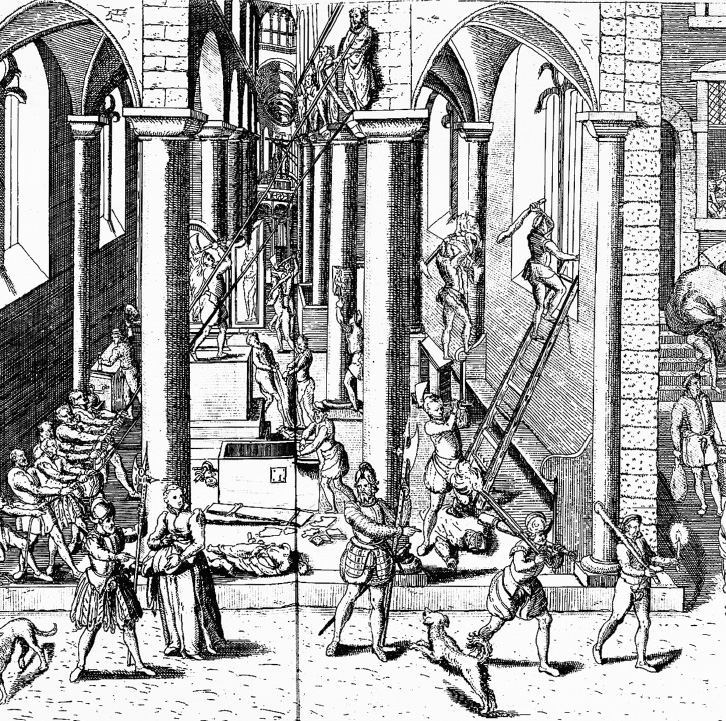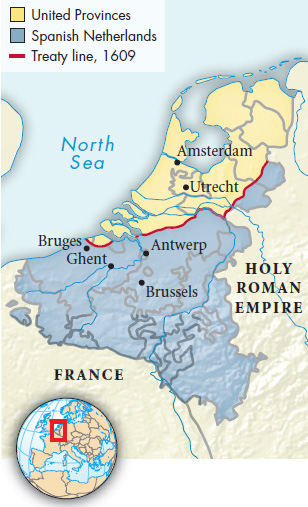A History of Western Society: Printed Page 419
A History of Western Society, Value Edition: Printed Page 431
The Netherlands Under Charles V
In the Netherlands, what began as a movement for the reformation of the church developed into a struggle for Dutch independence. Emperor Charles V had inherited the seventeen provinces that compose present-day Belgium and the Netherlands (see page 405). Each was self-governing and enjoyed the right to make its own laws and collect its own taxes. The provinces were united politically only in recognition of a common ruler, the emperor. The cities of the Netherlands made their living by trade and industry.

In the Low Countries as elsewhere, corruption in the Roman Church and the critical spirit of the Renaissance provoked pressure for reform, and Lutheran ideas took root. Charles V had grown up in the Netherlands, however, and he was able to limit their impact. But Charles V abdicated in 1556 and transferred power over the Netherlands to his son Philip II, who had grown up in Spain. Protestant ideas spread.

By the 1560s Protestants in the Netherlands were primarily Calvinists. Calvinism’s intellectual seriousness, moral gravity, and emphasis on any form of labor well done appealed to urban merchants, financiers, and artisans. Whereas Lutherans taught respect for the powers that be, Calvinism tended to encourage opposition to political authorities who were judged to be ungodly.
When Spanish authorities attempted to suppress Calvinist worship and raised taxes in the 1560s, rioting ensued. Calvinists sacked thirty Catholic churches in Antwerp, destroying the religious images in them in a wave of iconoclasm. From Antwerp the destruction spread. Philip II sent twenty thousand Spanish troops under the duke of Alva to pacify the Low Countries. Alva interpreted “pacification” to mean ruthless extermination of religious and political dissidents. On top of the Inquisition, he opened his own tribunal, soon called the “Council of Blood.” On March 3, 1568, fifteen hundred men were executed. To Calvinists, all this was clear indication that Spanish rule was ungodly and should be overthrown.
Between 1568 and 1578 civil war raged in the Netherlands between Catholics and Protestants and between the seventeen provinces and Spain. Eventually the ten southern provinces, the Spanish Netherlands (the future Belgium), came under the control of the Spanish Habsburg forces. The seven northern provinces, led by Holland, formed the Union of Utrecht and in 1581 declared their independence from Spain. The north was Protestant; the south remained Catholic. Philip did not accept this, and war continued. England was even drawn into the conflict, supplying money and troops to the northern United Provinces. (Spain launched an unsuccessful invasion of response in response.) Hostilities ended in 1609 when Spain agreed to a truce that recognized the independence of the United Provinces.